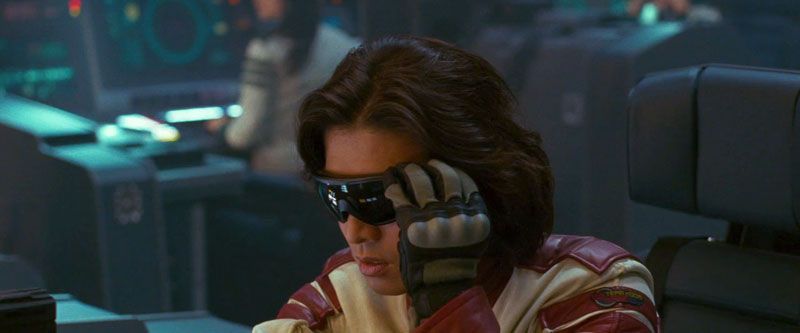Publiusr, as with people who claim to categorically hate all "digital" or "computer" effects, I say "it all depends." I don't know exactly which artifact you are referring to when you say "pixelation." The simple fact is, there are usually artifacts of one sort or another when transferring between media. Lots of features have been s
hot on video and then transferred to film for distribution.
The odd motion of characters you spoke of might be due to several things. For example, cinema film is typically 24 fps, while most video systems are faster. PAL is a single frame faster, while NTSC is (approximately) six frames faster. Thus, some PAL transfers may be speeded up by one frame—which produces its own artifacts in both image and sound—while NTSC is typically interlaced with a "3:2 pulldown." Digital televisions are actually a godsend for the cinephile because one can run the movie at its native frame rate...
But that doesn't stop avoidable artifacts from showing up, such as end-users who run their HDTVs at a "full screen" mode, which distorts the presentation of SD material. While it is possible that your local PBS station is doing something wrong, professionals typically know what they are doing. And PBS has (our) money to hire capable engineers.
The garbage mattes show up on analog video because of the latitude limitations. Where the "knee" of the gamma curve is set on the video camera may accent them. Digital video is better, as are the film scanners. Some artifacts might be cleaned up, but that takes time and manpower—despite sophisticated software. Getting rid of the garbage mattes is not a simple task, like eliminating dirt and scratches on the frame, or fixing the exposure caused by "strobing" light sources (such as fluorescent).
PS—Another artifact that may cause the "odd motion of characters" is deinterlacing, which may be the movie file, or the user settings on the display.
So help me, I want somebody to combine blue-ray with one of those huge platter laser disks of old and do analog laserdiscs.
I assume you know that Laserdisc
is analog? The video on LDs is not digital, which is why digital sound, when it finally came along, was greeted with such enthusiasm.

